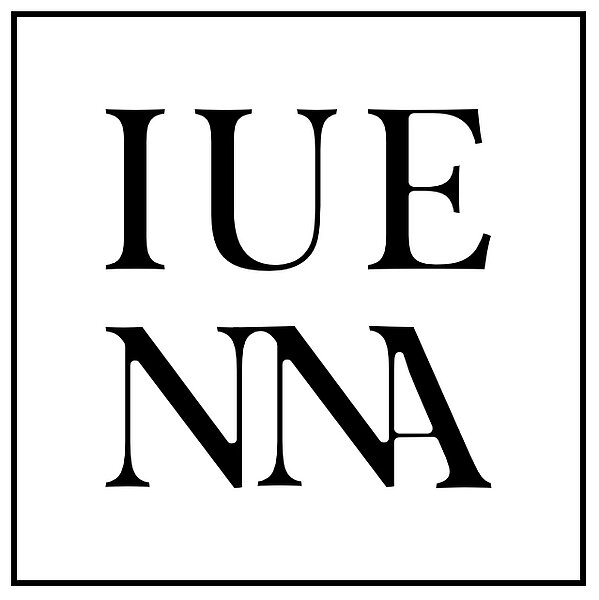Project Overview
IUENNA is an innovative initiative that advances digital methods in Austrian archaeology. By addressing complex cultural-historical questions, actively shaping Digital Humanities in Classical Studies, and ensuring long-term preservation of cultural heritage, IUENNA fosters sustainable knowledge management.
The project focuses on the archaeological micro-region of the Jauntal (Carinthia, Austria) and is funded by the Austrian Academy of Sciences' Go!Digital 3.0 program.
About This GitHub Page
This GitHub Page provides reusable web applications and showcases practical use cases for managing and archiving archaeological data sustainably.
Project Leadership
The IUENNA project is coordinated by Dr. Dominik Hagmann (kärnten.museum) and Dipl.-Ing. Franziska Reiner (Austrian Archaeological Institute, Austrian Academy of Sciences). Both bring significant expertise in archaeology and digital humanities to the project, ensuring a robust and sustainable implementation.
IUENNA Collection
The IUENNA collection is the first initiative of its kind in Austria, consolidating research spanning far over 100 years from more than 200 archaeological sites, primarily (but not exclusively) in the Jauntal/Podjuna Valley, Carinthia. In the course of the IUENNA project, every feasible effort was made to digitize and preserve as much available material as possible. This included over 20,000 items—excavation reports, geophysical surveys, 3D models, and retro-digitized archives—ensuring their long-term accessibility for future research.. The data is organized into six semantically defined subcollections: Hemmaberg (HB), Globasnitz (GLO), Jaunstein (JAU), Sankt Stefan (STE), Jauntal (TAL), and Retrodigitalisate (RET). These subcollections feature a detailed and reusable file folder structure for comprehensive data management. Each resource is enriched with freely accessible, globally available, detailed, machine-readable metadata in adherence to the FAIR and CARE principles.
Status: 2025-04-04
The collection supports advanced Roman-archaeological research, digital-archaeological workflows, and GIS-based spatial analysis through its structured organization and seamless database integration. Data is preserved in sustainable formats such as GeoTIFF for georeferenced raster data, GPKG, DXF, and SVG for georeferenced vector data, PDF/A for documents, TIFF/PNG for high-resolution images, and OBJ for 3D models. Web Mapping Applications (WMA) further enhances accessibility, allowing users to interactively explore spatial and thematic dimensions of the dataset.
The IUENNA collection is securely archived in the ARCHE repository, ensuring long-term sustainability and location-independent accessibility. Within the ARCHE framework, the repository safeguards data through redundancy, secure storage, environmental controls, and proactive monitoring, protecting against natural disasters, physical damage, and mechanical wear. With all materials digitized, the original analog records can be preserved in physical archives under optimal conditions as a backup, eliminating the need for general and frequent direct access. While we generally aimed for free and open access under CC BY 4.0 licenses, partial restrictions apply to some objects. However, in such cases, access remains generally available upon request, and descriptive metadata is always open, providing holistic information instantly. Hosting over 400 GB of curated data with persistent identifiers for traceability and citation, ARCHE serves as the backbone of IUENNA. Moreover, the IUENNA dataset is fully integrated into the Ariadne Research Infrastructure and OpenAIRE, significantly enhancing data discoverability and interoperability for the global research community. By creating digital twins of entire archaeological datasets, IUENNA sets a new benchmark for open science and digital preservation in Austrian archaeology. It offers a scalable and transferable model for future projects, while also enabling advanced applications such as artificial intelligence (AI) in archaeological data analysis.
Project Framework
The IUENNA project is a collaboration among:
- State Museum for Carinthia (kärnten.museum)
- Austrian Archaeological Institute (ÖAI)
- Austrian Center for Digital Humanities and Cultural Heritage (ACDH-CH)
- Federal Monuments Authority (BDA)
- ARDIG – Archäologischer Dienst GesmbH
Through a comprehensive open-science approach, IUENNA establishes a model for the long-term digital preservation of archaeological data and cultural insights.
Explore More
Visit our dedicated project page for detailed insights:
References
- Argote, D. L., López-García, P. A., Torres-García, M. A., & Thrun, M. C. (2025). Machine Learning for Archaeological Applications in R (1st ed.). Cambridge University Press. https://doi.org/10.1017/9781009506625
- Caluori, L. (2024). Hey Alexa, why are you called intelligent? An empirical investigation on definitions of AI. AI & Society, 39(4), 1905–1919. https://doi.org/10.1007/s00146-023-01643-y
- Ciccone, G. (2024). ChatGPT as a digital assistant for archaeology: Insights from the smart anomaly detection assistant development. Heritage, 7(10), Article 10. https://doi.org/10.3390/heritage7100256
- Cobb, P. J. (2023). Large language models and generative AI, oh my!: Archaeology in the time of ChatGPT, Midjourney, and beyond. Advances in Archaeological Practice, 11(3), 363–369. https://doi.org/10.1017/aap.2023.20
- Gattiglia, G. (2025). Managing artificial intelligence in archaeology: An overview. Journal of Cultural Heritage, 71, 225–233. https://doi.org/10.1016/j.culher.2024.11.020
- Hagmann, D., & Reiner, F. (2023). openIng the soUthErn jauNtal as a micro-regioN for future Archaeology: A «para-description». Peer Community Journal, 3, Article e120. https://doi.org/10.24072/pcjournal.338
- Tenzer, M., Pistilli, G., Brandsen, A., & Shenfield, A. (2024). Debating AI in archaeology: Applications, implications, and ethical considerations. Internet Archaeology, 67. https://doi.org/10.11141/ia.67.8
- Zoldoske, T. (2024). Metadata for discovery: Planning for an information network. Internet Archaeology, 65. https://doi.org/10.11141/ia.65.6
- Zubrow, E. (2024). A prolegomenon on archaeological complexity and disorganization: Fragmentation and missing data. Journal of Archaeological Method and Theory, 31(2), 689–706. https://doi.org/10.1007/s10816-023-09636-3
